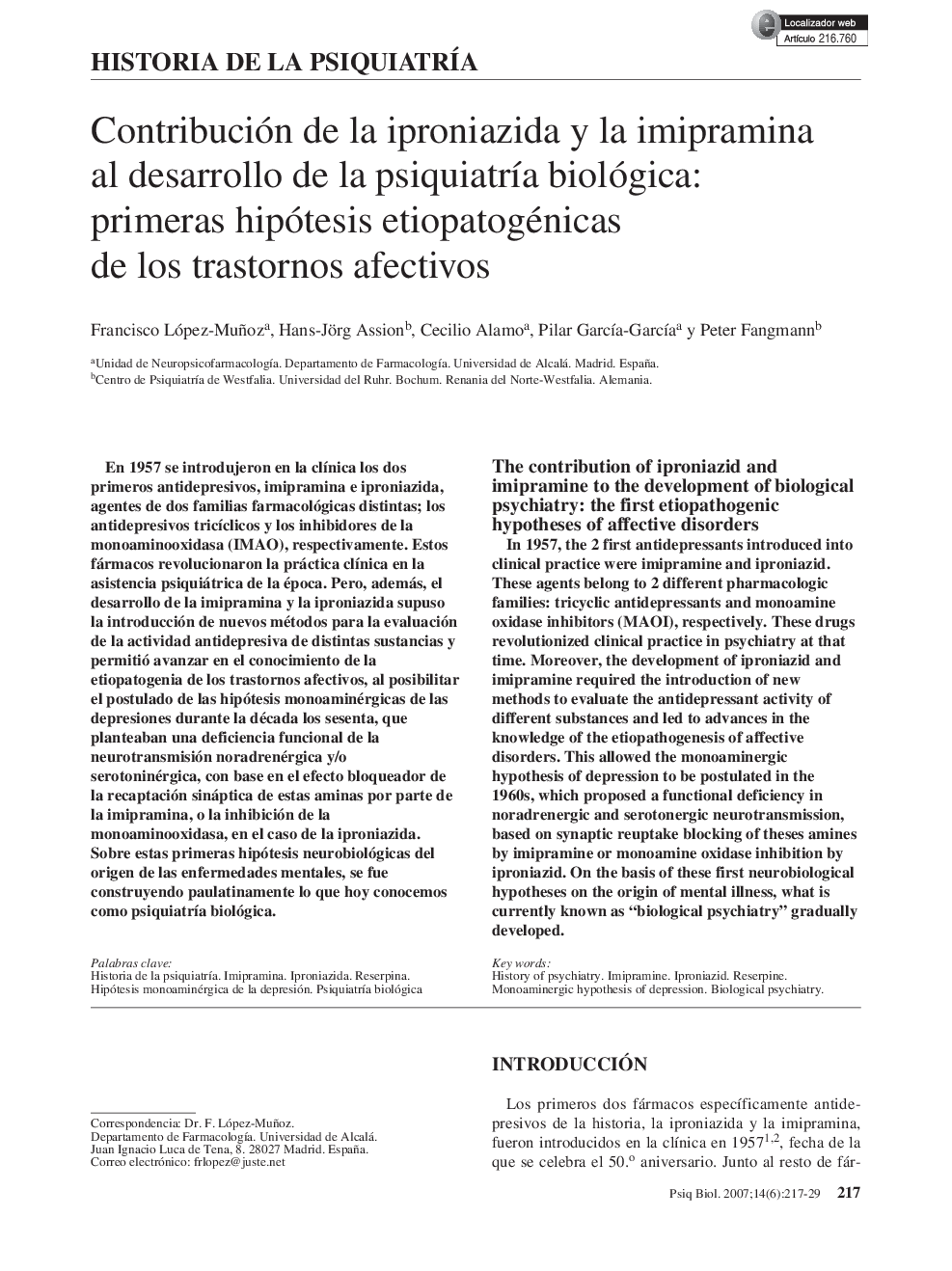| کد مقاله | کد نشریه | سال انتشار | مقاله انگلیسی | نسخه تمام متن |
|---|---|---|---|---|
| 4188841 | 1278033 | 2007 | 13 صفحه PDF | دانلود رایگان |
عنوان انگلیسی مقاله ISI
Contribución de la iproniazida y la imipramina al desarrollo de la psiquiatrÃa biológica: primeras hipótesis etiopatogénicas de los trastornos afectivos
دانلود مقاله + سفارش ترجمه
دانلود مقاله ISI انگلیسی
رایگان برای ایرانیان
کلمات کلیدی
موضوعات مرتبط
علوم پزشکی و سلامت
پزشکی و دندانپزشکی
روانپزشکی و بهداشت روانی
پیش نمایش صفحه اول مقاله

چکیده انگلیسی
In 1957, the 2 first antidepressants introduced into clinical practice were imipramine and iproniazid. These agents belong to 2 different pharmacologic families: tricyclic antidepressants and monoamine oxidase inhibitors (MAOI), respectively. These drugs revolutionized clinical practice in psychiatry at that time. Moreover, the development of iproniazid and imipramine required the introduction of new methods to evaluate the antidepressant activity of different substances and led to advances in the knowledge of the etiopathogenesis of affective disorders. This allowed the monoaminergic hypothesis of depression to be postulated in the 1960s, which proposed a functional deficiency in noradrenergic and serotonergic neurotransmission, based on synaptic reuptake blocking of theses amines by imipramine or monoamine oxidase inhibition by iproniazid. On the basis of these first neurobiological hypotheses on the origin of mental illness, what is currently known as “biological psychiatry” gradually developed.
ناشر
Database: Elsevier - ScienceDirect (ساینس دایرکت)
Journal: PsiquiatrÃa Biológica - Volume 14, Issue 6, December 2007, Pages 217-229
Journal: PsiquiatrÃa Biológica - Volume 14, Issue 6, December 2007, Pages 217-229
نویسندگان
Francisco López-Muñoz, Hans-Jörg Assion, Cecilio Alamo, Pilar GarcÃa-GarcÃa, Peter Fangmann,